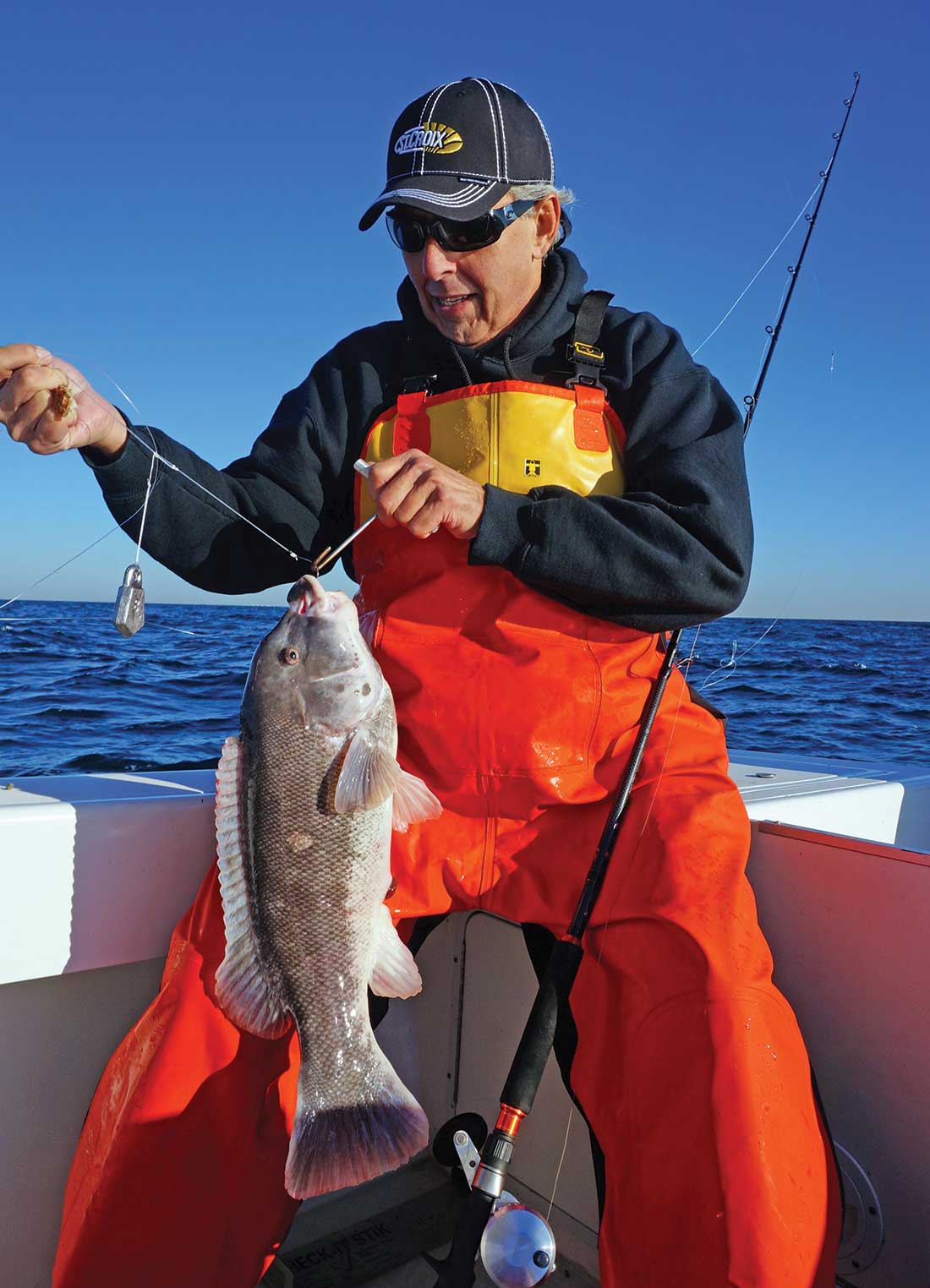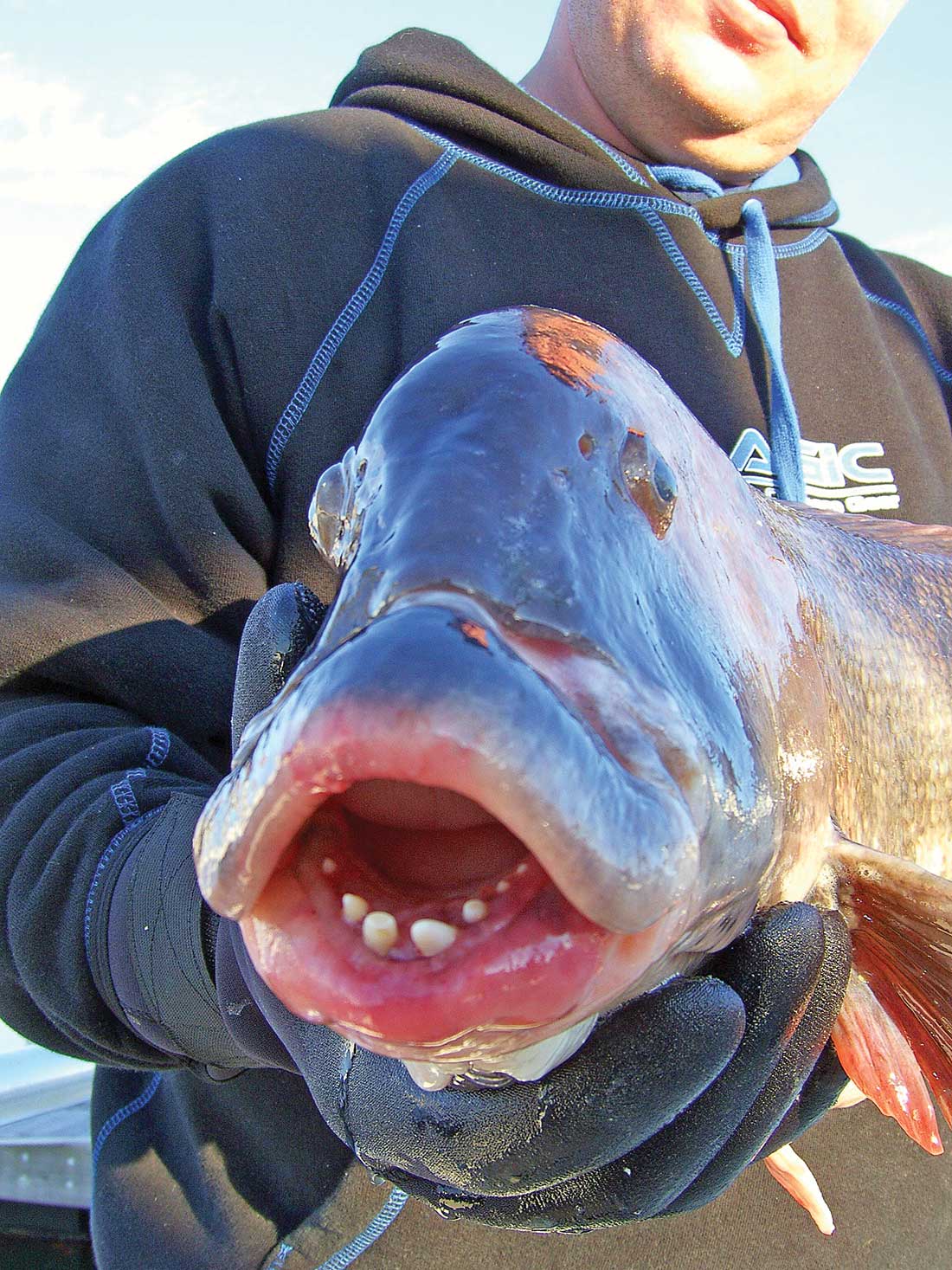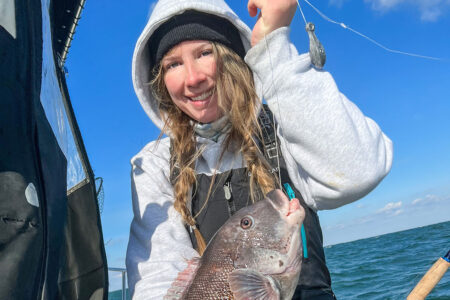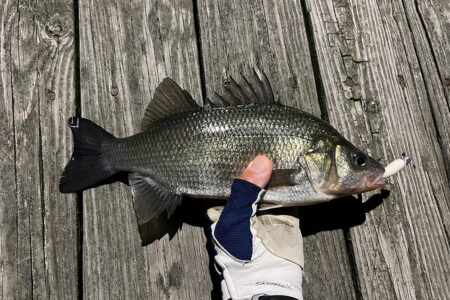Because last fall was exceptional, there is a good chance we will see much improved blackfish action this spring.
One of the best hints that spring blackfish are ready to chew is the first showing of those lovely little yellow weeds better known as dandelions. And as the yellow pests begin spreading like wild fire, more and more tog come out of hibernation from their deep-water lairs, usually bringing quite an appetite with them. Unfortunately, stringent regulations on blackfish in recent years have deterred most anglers from taking advantage of the spring run. Because the fall of 2019 proved to be exceptional with an abundance of mixed size togs, there is a good chance we will see much improved blackfish action this spring than last year, which was disappointing to say the least. So why not jump on the bandwagon and take advantage of what this spring season might offer?

Veteran Wisdom
It’s been quite some time since I deliberately put bait down for spring blackfish. Therefore to refresh my noggin from some accumulated rust, I reached out to longtime veteran and blackfish guru Capt. Rich Jensen of the Orient based charter boat, Nancy Ann IV. There isn’t much this veteran captain doesn’t know when it comes to fishing, especially how to find and catch blackfish. “Blackfish return and feed right where they left off, which is in deep-water, usually in 60- to 80-foot depths,” Capt. Rich explained. “The most important factor however, is water temperature. Blackfish begin chewing when water temperatures reach 49 or 50 degrees.” In the eastern section of Long Island Sound, those temperatures occur by the third week of April, which gives anglers on the East End about a week of good fishing before the season closes and until the fall season opens on October 11 in Long Island Sound. Fortunately, the Western Sound experiences an early bite of tog since water temps rise quicker than out on the East End, which finds anglers scoring on rocky lairs in both deep and shallow depths. In the past, before open and closed seasons were established, May until mid-June produced excellent results in shallow areas containing rocks, mussel beds, wrecks and pilings. Isolated rocks and wrecks on an otherwise flat and featureless bottom are always prime spots, serving as an oasis for crabs, worms and other tog food. For example, most sandy bottoms along the South Shore contain wrecks and reefs that can produce very good spring fishing.
Meet Tautoga Onitis
A member of the wrasse family, fishermen have given tautog the nickname “blackfish” due to its dark mottled sides that are either dull black, blackish green, or blackish blue. Anglers also call tautog “white chin” because this coloring pattern is commonly found on large males. Tautog are slow growing and can live 35 to 40 years. Tautog are distributed along the Northeast Atlantic coast with the greatest abundances occurring between Cape Cod and Chesapeake Bay. Throughout their life, tautog aggregate around structured habitats. In Long Island Sound, tautog are generally found around rocks and boulders. This fondness for structure makes tautog easy to catch, even when biomass levels are low. The easy catchability and slow growth rate make tautog highly susceptible to overfishing and slow to rebuild. Along Long Island Sound, blackfish inhabit rocks and boulders with the adults staying close to their preferred homesite throughout the year. Along the ocean South Shore, blackfish inhabit wrecks, jetties, natural and artificial reefs, and shellfish beds. Shallow, vegetated estuaries and inshore areas serve as juvenile nurseries, while larger juveniles cohabitate with adults in deeper offshore waters. During spring, blackfish migrate inshore to spawn in estuaries and nearshore marine waters. They remain inshore throughout the summer, then move to 20- to 60-foot depths as fall approaches, finally spending the winter in the 100- to 150-foot depths where they hibernate until the water reaches 48 degrees at which time they shake off their winter dormancy.
Smaller = Bigger Fish
You’ll do much better if you seek out smaller, hard-to-find spots that receive less pressure. Pull out a chart and look for some small, isolated reefs or wrecks in 60 to 80 feet of water in both the Sound and along the South Shore. To pinpoint these structures, GPS and fish finder are both paramount to home in on your targets. When you reach the general area, motor along in progressively wider circles while watching the screen for signs of structure. As you pass a piece that seems appealing, spin around, make another pass and as you approach the piece, get ready to hit the MOB button on the GPS. Before tossing over the anchor, examine on the chart plotter how the wind and current is pushing the boat to allow you to anchor over the structure.
Precision Anchoring
Precise anchoring is relevant to successful togging. Not only does proper anchoring keep the boat directly over the structure, it helps to keep fishing line vertical and hold bottom more effectively. Once you’ve found the pinnacle of the piece being targeted, deploy the anchor well up current or upwind of the structure and let out line until the boat is directly over the highest section of the structure. It’s a good idea to set a second anchor to keep the boat from swinging too much, especially with wind against current. This will keep you over the choice spot and help prevent snags that often occur when the boat is swinging. Better yet, when conditions are relatively calm, a “wreck anchor” suits well and can be bent back into shape once retrieved. Once anchored, have each angler fish from a different part of the boat, as sometimes a matter of just a few feet can make a big difference in finding the hotspot. You can also fish different parts of the structure by simply letting out or taking in anchor line.

Hit or Miss
If bites are nonexistent, keep dropping the rigs around and away from the boat. Plenty of times the fish may smell the bait and will move under the boat, or if it is early in the morning blackfish may need to wake up, especially before dawn. If you have given it a fair shake you may want to move the anchor back or forward 20 or 30 feet as many times a simple adjustment is all that is needed. Sometimes it’s a matter of finding the right depth. Therefore don’t hesitate to haul anchor and try different depths until you hit paydirt.
If the sounder is marking fish, but it seems as if the tog are suffering from lockjaw, consider the tide. Blackfish feed best in moving water and tend to shut off during slack water, although some areas. Like South Shore inlets might produce best near the end and beginning of current flow. The current doesn’t need to be moving hard, but it should be moving. Sometimes that means waiting for the current to pick up or the tide to change before the fish start to feast.
Choice Baits
Unlike the fall season, Capt. Rich Jensen prefers several types of soft baits over green crabs during the spring. According to Rich, the blackfish have just come out of hibernation so the lack of feeding for better than three months has caused their mouths to be a bit tender. Fresh skimmer clams and freshly shuck bank mussels both are favorites of togs as are hermit crabs due to their softness. And though all these baits are primo choices of Capt. Rich during the spring, his favorite is sandworms. Blackfish will rarely pass up worms and since the water is much too cold to host the usual clan of sea bass, porgies, bergals and triggerfish that make using soft baits virtually impossible during the fall, they are nowhere to be found during the early spring. If you are adamant about using green crabs or any hard-shell crab, Capt. Rich suggests using very small pieces on small hooks for the best results. Another bait that will produce is live blue mussels by inserting a small hook behind the neck, then slightly crack the shell, send it down and hold on as this tactic can be a true tog killer.
Tackle
For the most part, spring blackfish fight or bite as aggressively as in the fall. However, the lairs are the same and because of that you must treat the terrain accordingly. While some anglers will opt for fairly light spinning tackle and jigs for shallow water fishing, tackle with a bit more muscle is required for deep water togging. That includes rods with fast taper tips for sensitivity, and powerful butt tapers for the lift. Therefore, 6- to 7-foot, 20- to 30-pound class graphite rods and matching conventional reels spooled with 20- to 30-pound make for an ideal outfit.
Rigs should be plain and simple with a single hook attached to a Loop Knot tied 4 to 10 inches above the sinker. The height of the knot will depend on where you are fishing. The lower loops are best along the South Shore wrecks and reefs while the higher Loop Knot is better suited for the rocks and boulders of the Sound. Hooks styles and sizes will also vary depending on the bait being employed. If green or Asian crab is on the menu, cut the greenies into quarters rather than halves and use the smallest Asians you can find. Fiddlers are ideal if you can obtain some. Apply the crabs to a 1/0 Gamakatsu Octopus hook, while hermit crabs will stand up well on 3/0 Gamakatsu Bait Savor hooks. The two barbs along the shank will help keep the hermits from bunching up at the bottom of the hook which is a reality with octopus hooks. The same bait savers applies when employing clams, bank mussels and sandworms. Only difference would be to replace the Gamakatsu 3/0 Bait savers with a 1/0 Gamakatsu. The hooks should be tied via a Snell knot to a 12-inch of 50-pound fluorocarbon leader and a Surgeon Knot on the other end and attach it to the Loop Knot. Sinkers round out the terminal end, which depending on the area being fished, will dictate the sizes needed. In any event, make sure to have plenty on hand as surely some will succumb to the sticky homesite of the blackfish.
Remember the net and some wire mesh gloves. The net will come in handy for landing a big fish, while the gloves will help you hold these ultra-slippery fish while you remove the hook or clean your catch. Lastly, keep in mind that blackfish will be picking up the bait more gingerly during the spring compared to the fall. You should always try to fish without tension on your line. This is especially important during the spring, when tog tend to be more sluggish.





